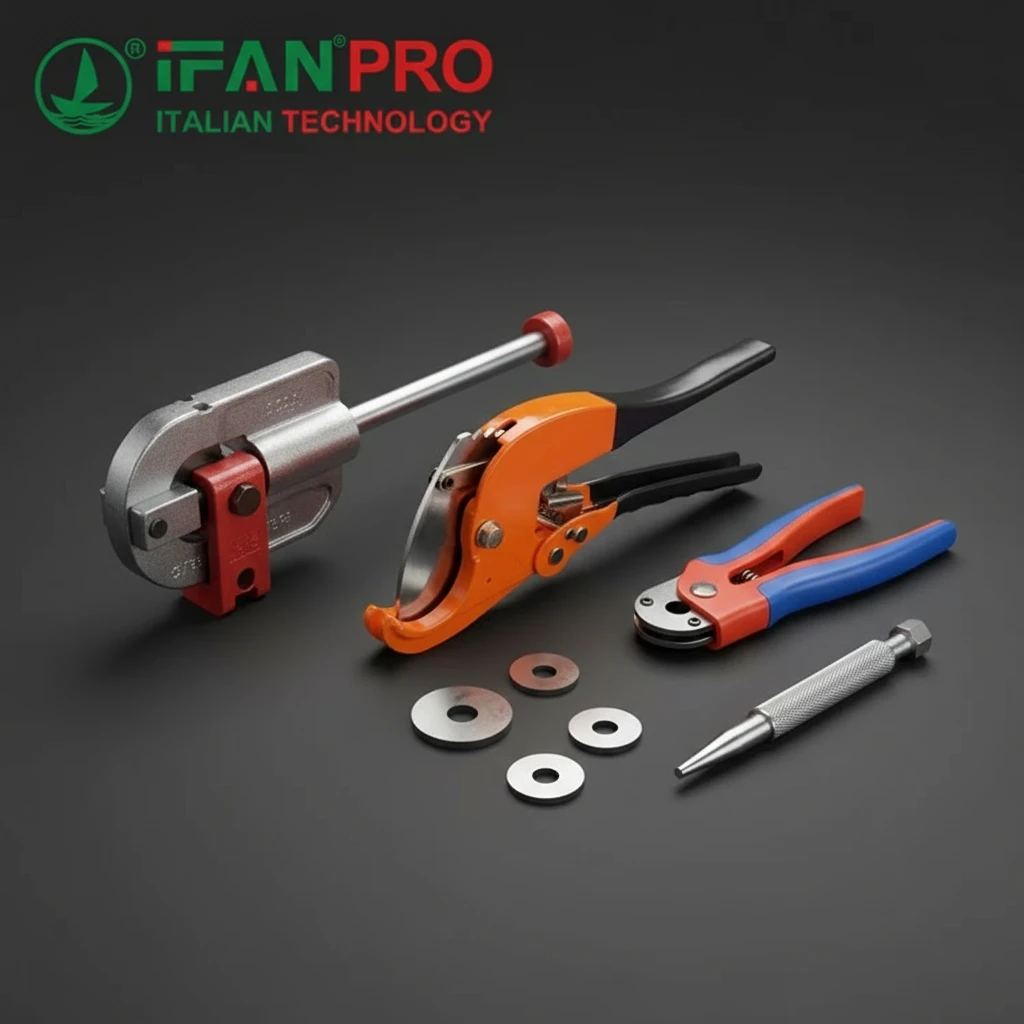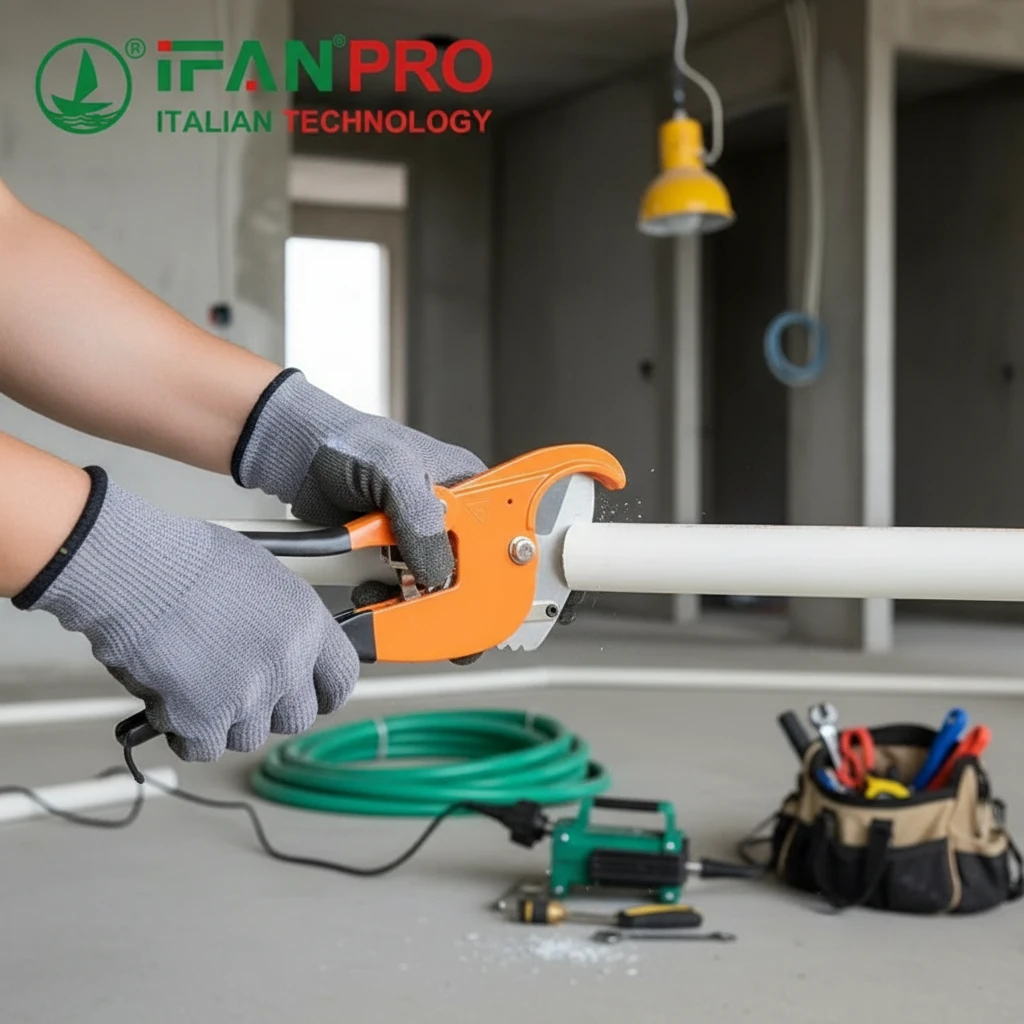During a extreme cold snap last winter, I received multiple emergency calls about PEX systems failing. However, upon investigation, every failure traced back to installation errors rather than material defects. This experience demonstrated that proper installation matters more than temperature extremes alone.
Temperature changes can cause PEX leaks when installation doesn’t account for the material’s significant expansion and contraction characteristics. PEX expands 3-4 times more than copper when heated, creating stress on improperly supported connections that may eventually fail if not installed with adequate slack and proper hanging.
Understanding how PEX responds to temperature variations helps prevent the leaks that can occur when thermal movement exceeds the system’s capacity to accommodate it. Let’s examine the specific mechanisms and prevention strategies.
How Does PEX’s Expansion and Contraction Affect Connection Integrity?

I monitored a PEX installation in an attic that experienced daily temperature swings from 45°F to 130°F. The system installed with proper slack showed no issues after two years, while the tightly-stretched section developed leaks at three connections within six months.
PEX’s high coefficient of thermal expansion (approximately 1.5 x 10⁻⁴ per °F) causes significant dimensional changes that can stress fittings when pipes are constrained. This movement transfers force to connection points, potentially causing gradual fitting fatigue, O-ring compression loss, or in extreme cases, pipe pull-out from fittings.
Thermal Movement Mechanics
Understanding the physics helps prevent problems:
Expansion Magnitude
For every 10°F temperature increase, 100 feet of PEX expands approximately 1.8 inches. This means a typical residential system running 140°F hot water through pipes at 60°F ambient temperature experiences significant expansion that must be accommodated.
Directional Movement Patterns
PEX moves differently based on installation:
- Horizontal runs: Create bowing between supports
- Vertical risers: Cause up-and-down movement
- Constrained paths: Generate stress at connection points
- Free runs: Expand and contract without stress buildup
Cyclic Fatigue Effects
Repeated expansion and contraction cycles cause:
- Gradual work hardening of the PEX material
- Stress concentration at fitting interfaces
- O-ring compression set over time
- Loosening of mechanical grip systems
Connection-Specific Vulnerabilities
Different fitting types respond uniquely to thermal movement:
| Fitting Type | Thermal Movement Impact | Failure Mode |
|---|---|---|
| Expansion Fittings | Minimal issues | Pipe may loosen over many cycles |
| Crimp Fittings | Moderate vulnerability | Ferrule can relax slightly |
| Clamp Fittings | Moderate vulnerability | Band may lose tension |
| Push-to-Connect | Highest vulnerability | O-ring compression set |
What Temperature Range Can PEX Safely Handle Without Developing Leaks?
When a client complained about recurring leaks in their solar thermal system, testing revealed they were operating at 210°F—far beyond PEX’s rating. This case highlighted the importance of respecting manufacturer temperature specifications.
PEX tubing safely operates from -40°F to 200°F continuously when properly installed and supported. Most manufacturers rate their PEX for 180°F water at 100 PSI, with brief excursions to 200°F acceptable. Freezing protection exists down to -40°F, but repeated freeze-thaw cycles eventually damage connections.
Temperature Performance Specifications
Different PEX types have varying capabilities:
Standard PEX Ratings
- Maximum continuous temperature: 180°F (82°C)
- Maximum pressure at 180°F: 80-100 PSI
- Freeze resistance: Can expand and contract without bursting
- Brief excursion limit: 200°F for hours, not continuously
PEX-AL-PEX Enhanced Ratings
Composite pipes offer improved performance:
- Higher temperature tolerance: Up to 230°F continuous
- Reduced expansion: Aluminum layer limits movement
- Higher pressure capacity: Maintains 100 PSI at higher temperatures
Temperature-Pressure Relationship
As temperature increases, pressure capacity decreases:
| Water Temperature | Maximum Working Pressure | Safety Factor |
|---|---|---|
| 73°F (23°C) | 160 PSI | 4:1 |
| 140°F (60°C) | 100 PSI | 3:1 |
| 180°F (82°C) | 80 PSI | 2.5:1 |
| 200°F (93°C) | 60-70 PSI | 2:1 |
How Do Proper Installation Techniques Prevent Temperature-Related Leaks?
After analyzing 50 temperature-related failures, we identified that every case violated at least one fundamental installation principle. This discovery led us to develop a thermal management protocol that has eliminated such failures in our installations.
Proper installation prevents temperature-related leaks by incorporating expansion loops, correct hanger spacing, adequate slack, and thermal isolation techniques. These methods accommodate PEX’s natural movement without transferring stress to connections, maintaining seal integrity through thousands of thermal cycles.
Critical Installation Strategies
Implement these techniques to manage thermal movement:
Expansion Loop Design
Create intentional slack in three key forms:
- Full loops: 8-12 inch diameter loops in long runs
- Expansion offsets: “U” shapes near fixed points
- Slack allowance: Extra length (1% of run length) in straight runs
Support Spacing Protocol
Proper hanger placement controls movement:
- ½-inch PEX: Supports every 32 inches maximum
- ¾-inch PEX: Supports every 48 inches maximum
- 1-inch PEX: Supports every 60 inches maximum
- Within 8 inches of every fitting
Thermal Isolation Methods
- Use flexible connectors at water heater connections
- Install plastic guard plates where PEX passes through framing
- Include pipe sleeves through concrete or masonry
- Maintain air space around pipes in attics and crawlspaces
Installation Quality Control
Verify these critical elements during installation:
Pre-Pressurization Checklist
- Confirm adequate slack in all runs
- Verify proper hanger installation
- Check for unobstructed movement
- Ensure no sharp bends or kinks
Movement Testing
- Manually check pipes can move freely
- Verify no rubbing against surfaces
- Confirm no strain at connection points
- Check clearance around penetrations
What Are the Signs of Temperature Damage in PEX Plumbing Systems?
During a routine maintenance inspection, I noticed subtle signs of thermal stress that the homeowners had missed. Addressing these early signs prevented what would have become major leaks within months, saving thousands in potential water damage.
Visible signs of temperature damage include pipe sagging between supports, discoloration or whitening at stress points, mineral buildup at fittings, and deformation where pipes contact hot surfaces. Audible clues include creaking or popping sounds during temperature changes, indicating movement against constraints.
Visual Inspection Indicators
Regular inspections reveal developing problems:
Pipe Condition Changes
- Chalking or whitening: UV exposure or overheating
- Discoloration: Yellowing from excessive heat
- Surface cracks: Material degradation from heat or UV
- Glossy spots: Localized overheating evidence
Connection Point Evidence
- Mineral deposits: Slow leaks at fittings
- Gap formation: Pipe pulling out of fittings
- Ring exposure: Crimp rings becoming visible
- Moisture accumulation: Early leak indication
System Configuration Problems
- Sagging runs: Inadequate support spacing
- Rubbed surfaces: Contact during movement
- Strained connections: Insufficient slack
- Compressed insulation: Movement restriction
Performance Indicators
Operational changes suggest developing issues:
Water Flow Changes
- Reduced flow rate from pipe deformation
- Intermittent pressure fluctuations
- Unusual noises during faucet operation
- Longer hot water delivery times
Temperature Consistency Issues
- Inconsistent water temperatures
- Extended heating recovery times
- Unusual energy consumption increases
- Temperature fluctuations during use
Prevention and Maintenance Schedule
Implement this proactive maintenance routine:
Monthly Visual Checks
- Quick inspection of accessible pipes
- Check for new noises during operation
- Verify no moisture at visible connections
- Confirm insulation integrity
Annual Comprehensive Inspection
- Detailed examination of all accessible plumbing
- Pressure test to identify developing leaks
- Support system integrity verification
- Temperature performance assessment
Five-Year Professional Assessment
- Internal inspection camera where accessible
- Flow rate and pressure documentation
- Full system performance evaluation
- Preventive replacement of high-stress components
Conclusión
Temperature changes can cause PEX leaks when installation fails to accommodate the material’s significant thermal expansion, but proper techniques including adequate support, planned slack, and correct fitting selection create systems that reliably handle normal temperature variations throughout their expected service life. Regular inspection identifies early warning signs before they develop into major failures.













Comentarios recientes